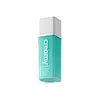What's inside
What's inside
 Key Ingredients
Key Ingredients

 Benefits
Benefits

 Concerns
Concerns

 Ingredients Side-by-side
Ingredients Side-by-side

Water
Skin ConditioningGlycolic Acid
BufferingEthoxydiglycol
HumectantCyclopentasiloxane
EmollientOctyldodecanol
EmollientPolyacrylate-13
Maltobionic Acid
BufferingPropanediol
SolventSalicylic Acid
MaskingSodium Polyacrylate
AbsorbentHydroxyethyl Acrylate/Sodium Acryloyldimethyl Taurate Copolymer
Emulsion StabilisingPolyisobutene
Glyceryl Caprylate
EmollientOctyldodecyl Xyloside
EmulsifyingPEG-30 Dipolyhydroxystearate
EmulsifyingTocopheryl Acetate
AntioxidantTriheptanoin
Skin ConditioningNiacinamide
SmoothingCapryloyl Salicylic Acid
ExfoliatingC13-15 Alkane
SolventSorbitan Isostearate
EmulsifyingPolysorbate 20
EmulsifyingDimethicone Crosspolymer
Emulsion StabilisingPolysorbate 60
EmulsifyingGlyceryl Undecylenate
EmollientDimethylolcyclohexane
SolventCyclohexasiloxane
EmollientCyclotetrasiloxane
EmollientXylose
HumectantWater, Glycolic Acid, Ethoxydiglycol, Cyclopentasiloxane, Octyldodecanol, Polyacrylate-13, Maltobionic Acid, Propanediol, Salicylic Acid, Sodium Polyacrylate, Hydroxyethyl Acrylate/Sodium Acryloyldimethyl Taurate Copolymer, Polyisobutene, Glyceryl Caprylate, Octyldodecyl Xyloside, PEG-30 Dipolyhydroxystearate, Tocopheryl Acetate, Triheptanoin, Niacinamide, Capryloyl Salicylic Acid, C13-15 Alkane, Sorbitan Isostearate, Polysorbate 20, Dimethicone Crosspolymer, Polysorbate 60, Glyceryl Undecylenate, Dimethylolcyclohexane, Cyclohexasiloxane, Cyclotetrasiloxane, Xylose
Water
Skin ConditioningGlycolic Acid
BufferingStearic Acid
CleansingCaprylic/Capric Triglyceride
MaskingBis-Diglyceryl Polyacyladipate-2
EmollientGlycerin
HumectantSodium Benzoate
MaskingCetyl Alcohol
EmollientPrunus Amygdalus Dulcis Oil
Skin ConditioningPolysorbate 60
EmulsifyingAmmonium Hydroxide
BufferingCyclopentasiloxane
EmollientBisabolol
MaskingXanthan Gum
EmulsifyingPhenoxyethanol
PreservativeCetearyl Alcohol
EmollientEthylhexylglycerin
Skin ConditioningDisodium EDTA
Water, Glycolic Acid, Stearic Acid, Caprylic/Capric Triglyceride, Bis-Diglyceryl Polyacyladipate-2, Glycerin, Sodium Benzoate, Cetyl Alcohol, Prunus Amygdalus Dulcis Oil, Polysorbate 60, Ammonium Hydroxide, Cyclopentasiloxane, Bisabolol, Xanthan Gum, Phenoxyethanol, Cetearyl Alcohol, Ethylhexylglycerin, Disodium EDTA
Ingredients Explained
These ingredients are found in both products.
Ingredients higher up in an ingredient list are typically present in a larger amount.
Cyclopentasiloxane, or D5, is a silicone used to improve texture of products and trap moisture.
D5 is considered lightweight and volatile. Volatile means it evaporates quickly after application. Once evaporated, D5 leaves a thin barrier that helps keep skin hydrated.
It is also an emollient. Emollients help soften the skin and prevent water loss. Silicones create a silky texture in products. D5 helps other ingredients become more spreadable.
Studies show D5 is safe to use in skincare products. We recommend speaking with a skincare professional if you have concerns.
Learn more about CyclopentasiloxaneGlycolic Acid is arguably the most famous alpha hydroxy acid (AHA) with tons of research backing its benefits.
It is found naturally in sugar cane but the form used in skincare is usually synthetic for purity and stability.
Glycolic acid removes the top layer of dead skin cells to allow newer and fresher ones to emerge.
AHAs work by breaking down the structural “glue” that holds old skin cells in place. When that buildup is gone, your skin can renew itself more efficiently.
Research also shows glycolic acid stimulates collagen production, helping to firm and thicken the skin over time. This is one of its biggest advantages over other AHAs.
Overall, glycolic acid helps with:
Fun fact: Glycolic acid boosts skin hydration by helping it produce molecules that increase hyaluronic acid naturally.
To work best, glycolic acid products should have a pH between 3-4 (that’s where exfoliation is most effective but still gentle on skin).
The pH and concentration of a product are key to its effectiveness:
It is normal to feel a slight stinging sensation when using glycolic acid. This usually fades as your skin adjusts.
Because glycolic acid has the smallest molecular size in the AHA family, it can penetrate deeper, which enhances its effectiveness but also makes it more likely to irritate sensitive skin.
If your skin is very sensitive or prone to rosacea, glycolic acid may be too strong; in that case, try milder options like lactic acid or a PHA instead.
Recent studies suggest glycolic acid might even help protect against UV damage. But don’t skip sunscreen! Freshly exfoliated skin is more sensitive to the sun.
Glycolic acid is a skincare superstar. It smooths, brightens, hydrates, and firms the skin. Unless you’re highly sensitive, it’s well worth adding to your routine.
Read more about some other popular AHA's here:
Learn more about Glycolic AcidPolysorbate 60 is used to help stabilize products. It is a surfactant and emulsifier. These properties help keep ingredients together in a product. Surfactants help reduce surface tension between ingredients with different states, such as liquids and solids. Emulsifiers help prevent oils and waters from separating.
Polysorbate 60 is sorbitol-based and created from the ethoxylation of sorbitan. Ethoxylation is a chemical reaction used to add ethylene oxide. Sorbitan is a the dehydrated version of sorbitol, a sugar found in fruits.
In this case, the 60 comes from reacting 60 units of ethylene oxide with sorbitan.
Polysorbates are commonly used in medicine and foods.
Learn more about Polysorbate 60Water. It's the most common cosmetic ingredient of all. You'll usually see it at the top of ingredient lists, meaning that it makes up the largest part of the product.
So why is it so popular? Water most often acts as a solvent - this means that it helps dissolve other ingredients into the formulation.
You'll also recognize water as that liquid we all need to stay alive. If you see this, drink a glass of water. Stay hydrated!
Learn more about Water